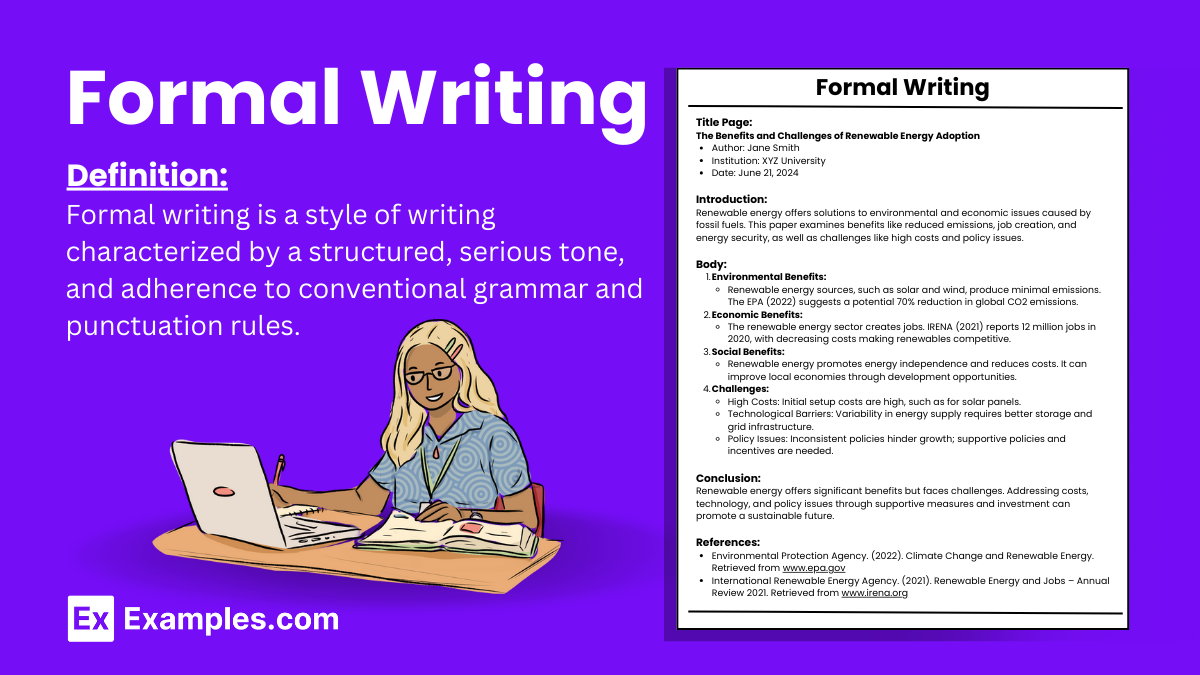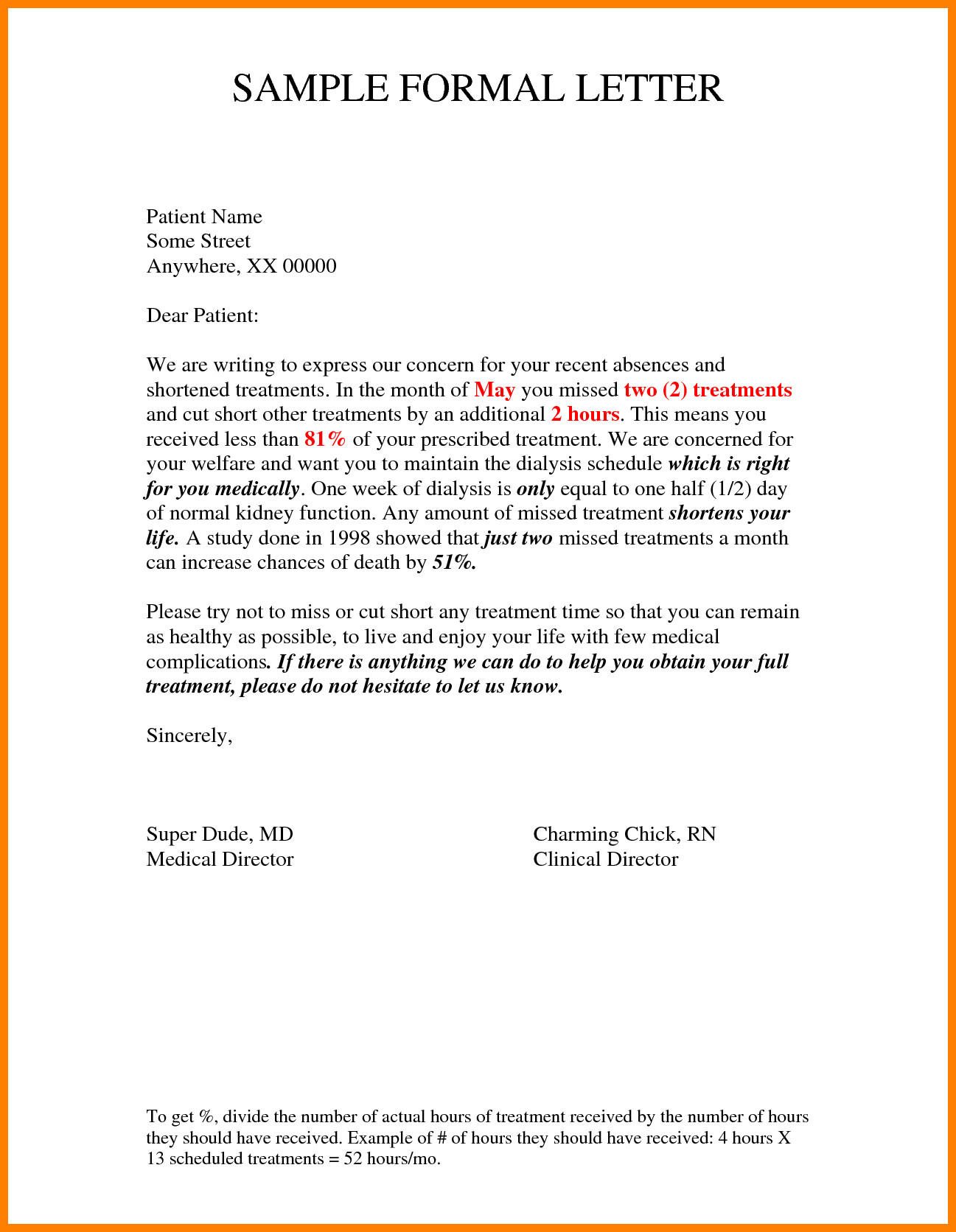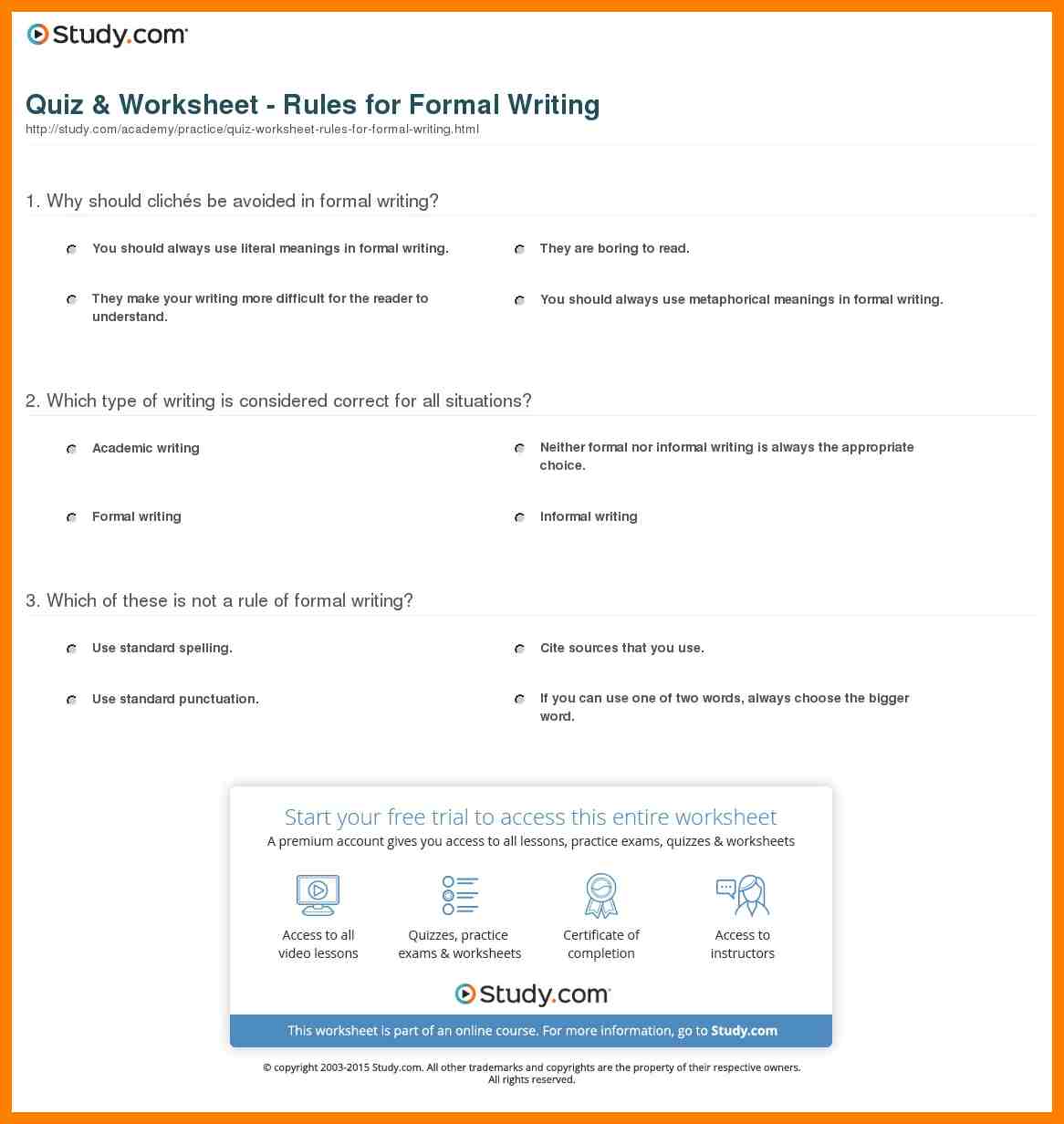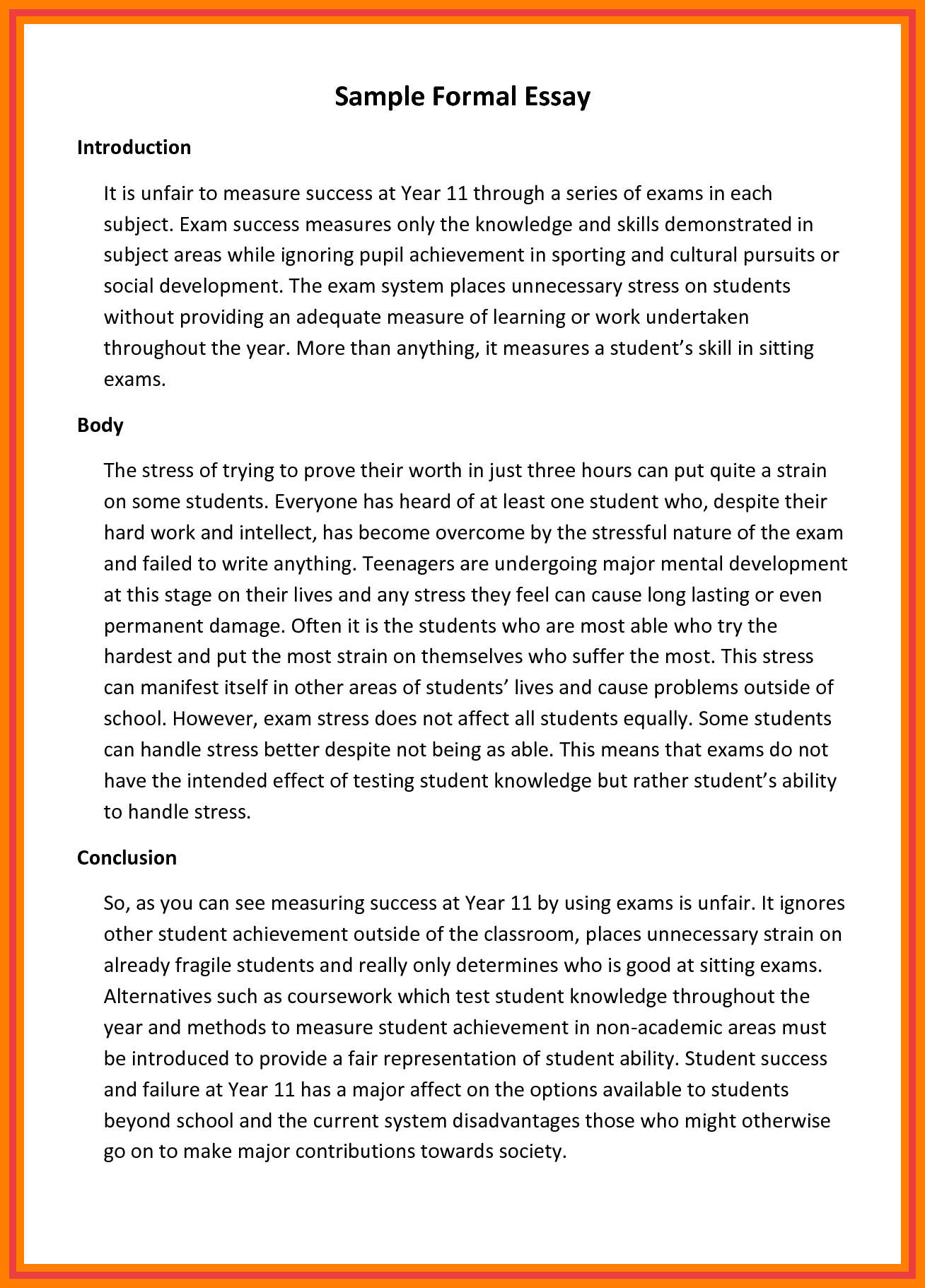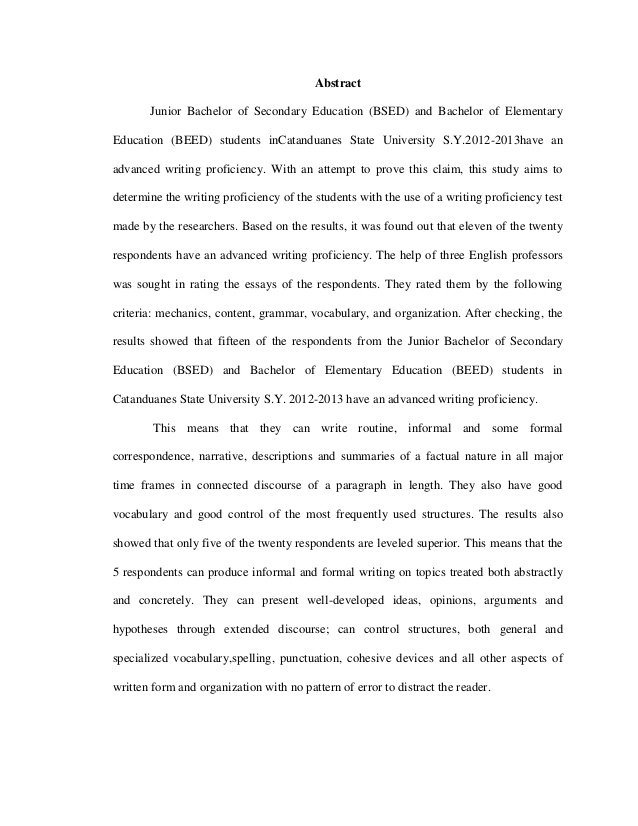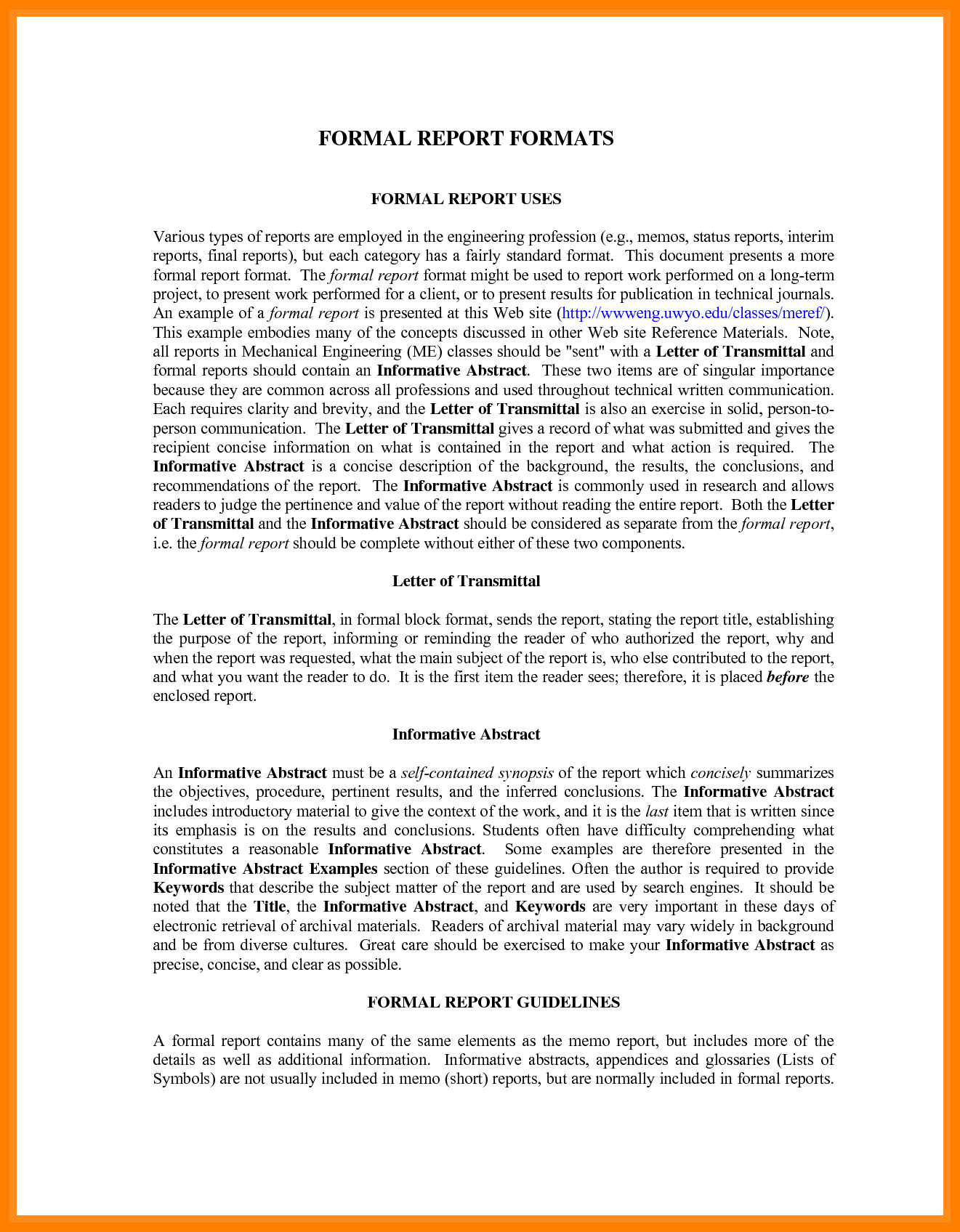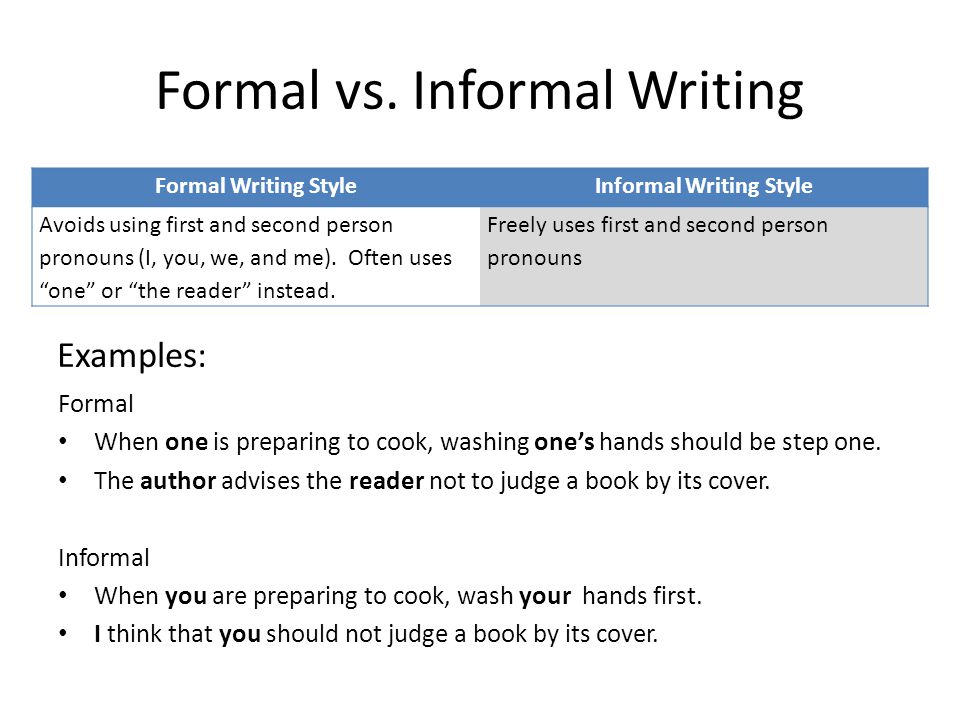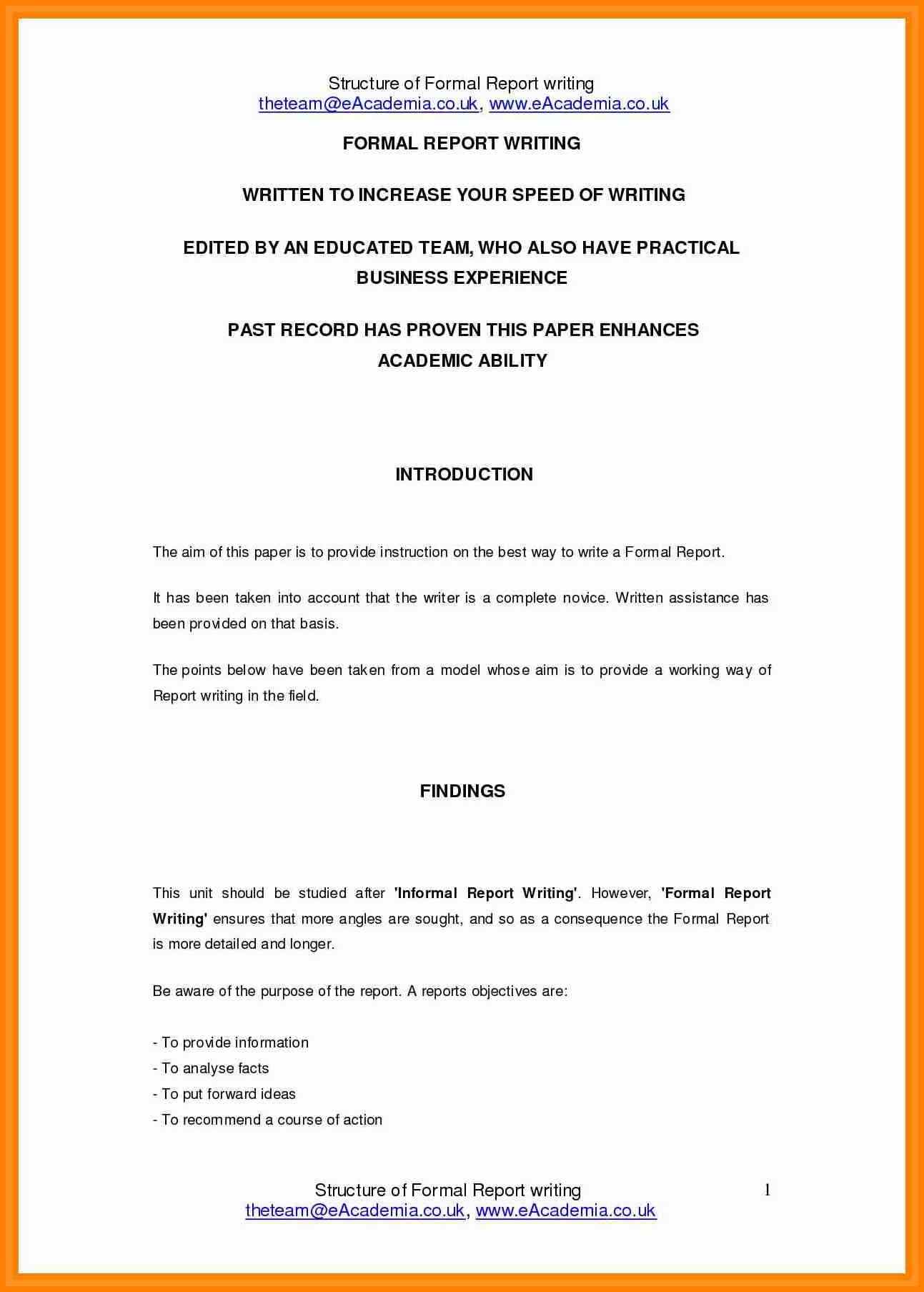Formal Writing
When writing reports, essays, documents, and even letters, there are two forms of the English language that you can choose from: the formal and the informal. Both types serve different purposes. The tone of voice you use, your choice of words, and the way you combine them together to create a cacophony vary between these two types. Formal and informal writing have different intended audiences, and an effective writer gets to know his audience first before he can decide on how to talk to them.
This is why it is important that you know who you are writing for because you don’t want to speak to them with an inappropriate tone of voice. Formal language in writing is less personal than informal language. You can use them when you are writing for academic purposes, when making legal documents, when writing to professionals, for business writing, and for formal letters. It gives an air of authority and, of course, formality to what you are writing which is best for writing that involves serious issues and facts.
What is Formal Writing?
Formal writing is a style of writing used for professional and academic communication. It follows a structured format, employs precise vocabulary, and avoids contractions, slang, or informal language. This style aims to convey information clearly and respectfully, adhering to grammatical rules and proper punctuation to maintain professionalism and credibility.
Format of Formal Writing
1. Introduction:
- Begin with a clear thesis statement.
- Provide context and background information.
2. Body:
- Organize content into coherent paragraphs.
- Use topic sentences for each paragraph.
- Include evidence, examples, and analysis.
3. Conclusion:
- Summarize main points.
- Restate the thesis in a new way.
- Offer final thoughts or recommendations.
4. Language:
- Use formal vocabulary and tone.
- Avoid contractions, slang, and colloquialisms.
- Ensure grammatical accuracy and proper punctuation.
5. References:
- Cite sources using a recognized citation style (e.g., APA, MLA).
- Include a bibliography or works cited page.
6. Formatting:
- Use a professional font (e.g., Times New Roman, Arial).
- Double-space the text.
- Include proper headings and subheadings.
Formal Writing Examples for Students
1. Academic Essay:
Topic: The Impact of Climate Change on Polar Bears
Introduction:
- “Climate change poses a significant threat to polar bear populations, with rising temperatures leading to the loss of their sea ice habitat. This essay examines the various impacts of climate change on polar bears, highlighting the urgent need for conservation efforts.”
Body Paragraph:
- “Polar bears rely on sea ice for hunting seals, their primary food source. As sea ice diminishes, polar bears are forced to travel greater distances to find food, leading to malnutrition and decreased reproduction rates. According to the National Snow and Ice Data Center (2020), the Arctic sea ice extent has been decreasing at a rate of 13% per decade.”
Conclusion:
- “In conclusion, climate change significantly impacts polar bears by reducing their habitat and food sources. Immediate action is necessary to mitigate these effects and preserve polar bear populations for future generations.”
2. Research Paper:
Title Page:
- “The Effects of Remote Learning on Student Performance: A Comparative Study”
- Author: Jane Doe
- Institution: XYZ University
- Date: June 2024
Abstract:
- “This research investigates the impact of remote learning on student performance during the COVID-19 pandemic. Using a sample of 500 students, the study compares academic outcomes between remote and in-person learning environments, revealing significant differences in engagement and achievement.”
Introduction:
- “The COVID-19 pandemic has necessitated a shift to remote learning, raising questions about its effectiveness. This study explores how remote learning affects student performance, with a focus on engagement, academic achievement, and mental health.”
Methods:
- “A survey was conducted among 500 high school students who experienced both remote and in-person learning. Data on grades, attendance, and self-reported engagement were collected and analyzed.”
Results:
- “The analysis showed that students in remote learning environments had lower grades and attendance rates compared to their in-person counterparts. Additionally, 70% of students reported feeling less engaged during remote classes.”
Discussion:
- “These findings suggest that remote learning poses challenges for student performance, primarily due to decreased engagement. Future research should explore strategies to enhance remote learning experiences.”
Conclusion:
- “Remote learning has negatively impacted student performance, highlighting the need for improved online education methods. Schools must adapt to ensure students receive quality education regardless of the learning environment.”
References:
- “Smith, J. (2020). The Impact of Online Learning on High School Students. Journal of Educational Research, 45(3), 123-134.”
3. Formal Letter:
Header:
- “123 Main Street Springfield, IL 62701 June 21, 2024”
Recipient Address:
- “Mr. John Smith 456 Elm Street Springfield, IL 62702”
Salutation:
- “Dear Mr. Smith,”
Body:
- “I am writing to express my interest in the Marketing Manager position advertised on your company’s website. With over five years of experience in marketing and a proven track record of successful campaigns, I am confident in my ability to contribute to your team.
In my previous role at XYZ Company, I managed a team of five and increased our social media engagement by 40% within six months. I am particularly skilled in digital marketing and data analysis, which I believe will be beneficial to your organization.
I have attached my resume for your consideration. I look forward to the opportunity to discuss how my skills and experiences align with your needs.”
Closing:
- “Sincerely, Jane Doe”
Formal Email Writing Examples
1. Job Application Email
Subject Line:
- “Application for the Marketing Manager Position”
Greeting:
- “Dear Hiring Manager,”
Body:
- “I am writing to apply for the Marketing Manager position advertised on your website. With over seven years of experience in digital marketing and a proven track record of successful campaigns, I am excited about the opportunity to contribute to your team.In my previous role at XYZ Company, I managed a team of five and increased our social media engagement by 40% within six months. My expertise in SEO, content creation, and data analysis will be valuable assets to your organization.Attached to this email are my resume and cover letter for your consideration. I look forward to the opportunity to discuss how my skills and experiences align with your needs.”
Closing:
- “Sincerely,
- John Doe johndoe@example.com
- (555) 123-4567″
2. Meeting Request Email
Subject Line:
- “Request for Meeting to Discuss Project Update”
Greeting:
- “Dear Ms. Smith,”
Body:
- “I hope this email finds you well. I am writing to request a meeting to discuss the current status of our ongoing project. Given the recent developments, I believe it is important for us to review the progress and address any potential challenges.Could we schedule a meeting for next Tuesday, June 27th, at 2:00 PM? Please let me know if this time is convenient for you or if there is another time that works better.I look forward to our discussion and appreciate your time and attention to this matter.”
Closing:
- “Best regards,
- Jane Doe janedoe@example.com
- (555) 987-6543″
3.Thank You Email After Interview
Subject Line:
- “Thank You for the Interview”
Greeting:
- “Dear Mr. Johnson,”
Body:
- “I am writing to thank you for the opportunity to interview for the Software Engineer position at ABC Company. I enjoyed learning more about the team and the innovative projects you are working on.I am particularly excited about the collaborative culture at ABC Company and the emphasis on continuous learning and development. I believe my experience in software development and my passion for problem-solving align well with the needs of your team.Thank you again for considering my application. I look forward to the possibility of contributing to ABC Company.”
Closing:
- “Sincerely,
- Mike Anderson mikeanderson@example.com
- (555) 321-7654″
More Samples & Examples of Formal Writing
1. Sample Formal Letter
2. Rules for Formal Writing
Informal and formal writing are simply choices given to you on how you would convey your different messages to different people. This is why it is important to know your audience because you can’t talk to all of them the same way. Tone and voice are very important elements in writing. They help create a general atmosphere for your paper that can highlight the points you are trying to convey.
3. Formal Essay Example
4. Formal Writing Example
- Formal writing cannot involve emotions or empathy in the content of their paper the way informal writing can.
Formal: Simply state the facts that you have gathered and any additional information about it that you want to include. There is no need to tell your audience about your struggles and feelings because formal writing is not an avenue for sensations.
Informal: I had a hard time in constructing my paper’s body since the topic is a little confusing.
5. Abstract Example
- Formal writing utilizes long sentences to be able to express a point more thoroughly. Informal writing is less complex than that.
Formal: The onlookers were disturbed and appalled by the distorted lifeless body that was left on the crime scene.
Informal: We saw the body of the murdered guy earlier and it was disgusting!
- Formal writing is very objective and, as aforementioned, does not incorporate emotions into writing. It also does not use emotive punctuation such as exclamation points.
Formal: The murderer of the 65-year-old resident of the quite town has been sentenced to a lifetime of servitude in jail.
Informal: Personally, I think that what the murderer did to that man is ruthless to say the least. He deserves to rot in jail.
6. Formal Report Format
7. Formal vs. Informal Writing
8. Formal Report Writing
Types of Formal Writing
Formal writing encompasses various styles and formats tailored to different purposes and audiences. Here are some common types of formal writing:
1. Academic Writing
- Research Papers: Structured documents presenting original research, including introduction, methodology, results, and discussion.
- Essays: Analytical or argumentative pieces exploring specific topics in depth.
- Theses and Dissertations: Extensive research projects required for advanced degrees, involving original research and comprehensive analysis.
2. Business Writing
- Reports: Detailed documents providing information, analysis, and recommendations on specific issues or projects.
- Proposals: Structured documents outlining plans, objectives, and methods for specific projects or initiatives.
- Memos: Internal communications within an organization, conveying important information or updates.
3. Technical Writing
- Manuals: Instructional documents providing step-by-step guidance on using products or systems.
- Technical Reports: Documents presenting technical information and analysis, often related to engineering or scientific research.
- Specifications: Detailed descriptions of technical requirements and standards for products or processes.
4. Legal Writing
- Contracts: Formal agreements outlining terms and conditions between parties.
- Briefs: Documents presenting legal arguments and supporting evidence in court cases.
- Legal Memoranda: Internal documents within a legal practice, analyzing legal issues and precedents.
5. Official Correspondence
- Letters: Formal communication between individuals or organizations, often following specific conventions.
- Emails: Professional digital communication, adhering to formal writing standards.
- Notices: Official announcements or information dissemination within organizations or to the public.
6. Journalism
- News Articles: Objective reports on current events, adhering to journalistic standards of accuracy and impartiality.
- Editorials: Opinion pieces presenting the author’s viewpoint on specific issues.
- Feature Articles: In-depth exploration of topics, often incorporating narrative elements and personal perspectives.
7. Creative Writing
- Literary Analysis: Critical examination and interpretation of literary works.
- Biographies and Autobiographies: Detailed accounts of individuals’ lives, focusing on significant events and achievements.
- Essays and Reviews: Formal critiques and analyses of books, films, art, and other cultural products.
Characteristics of Formal Writing
Formal writing is characterized by its adherence to a set of conventions and standards that ensure clarity, precision, and professionalism. Here are the key characteristics of formal writing:
1. Objective Tone
- Impersonal Language: Avoids personal pronouns like “I” and “we,” focusing instead on the subject matter.
- Neutrality: Maintains a neutral and unbiased perspective, presenting information and arguments based on facts and evidence.
2. Structured Format
- Clear Organization: Follows a logical structure with a clear introduction, body, and conclusion.
- Headings and Subheadings: Utilizes headings to organize content and guide the reader through the document.
- Paragraphs: Each paragraph focuses on a single idea or point, providing a clear and coherent flow of information.
3. Formal Language
- Vocabulary: Uses sophisticated and precise vocabulary, avoiding slang, colloquialisms, and contractions.
- Complex Sentences: Employs varied sentence structures, including complex and compound sentences, to convey ideas effectively.
- Technical Terms: Incorporates discipline-specific terminology appropriately, ensuring accurate communication of concepts.
4. Accuracy and Precision
- Factual Information: Relies on verified facts, data, and evidence to support arguments and claims.
- Exactness: Ensures precise use of words and phrases to avoid ambiguity and misinterpretation.
5. Professional and Polished Tone
- Respectful and Courteous: Maintains a respectful tone, even when addressing opposing viewpoints or criticisms.
- Consistency: Adheres to a consistent style and format throughout the document, including citation and referencing styles.
6. Formal Grammar and Syntax
- Proper Grammar: Follows standard grammatical rules, including correct use of punctuation, verb tenses, and subject-verb agreement.
- Syntax: Ensures syntactically correct sentences, enhancing readability and comprehension.
7. Evidence-Based
- Citations and References: Includes citations and references to acknowledge sources of information and support arguments.
- Examples and Illustrations: Uses examples, illustrations, and case studies to clarify and reinforce points.
8. Purposeful and Clear
- Clear Objectives: Clearly defines the purpose and objectives of the document, ensuring the reader understands the intent.
- Focused Content: Stays on topic, avoiding unnecessary digressions and irrelevant information.
9. Formal Formatting
- Typography: Uses formal font styles and sizes, appropriate for the type of document (e.g., Times New Roman, 12-point font).
- Spacing and Margins: Adheres to standard spacing (e.g., double-spacing) and margin requirements, enhancing readability.
10. Ethical and Responsible
- Honesty: Presents information truthfully and accurately, avoiding plagiarism and misrepresentation.
- Responsibility: Acknowledges limitations and potential biases, providing a balanced and fair perspective.
Rules of Formal Writing
Formal writing adheres to specific rules to ensure clarity, precision, and professionalism. Here are the key rules of formal writing:
1. Use Formal Language
- Avoid informal words, slang, and contractions.
- Choose precise and sophisticated vocabulary.
2. Maintain an Objective Tone
- Use third-person perspective; avoid first-person pronouns like “I” and “we.”
- Present information neutrally, focusing on facts rather than opinions.
3. Structure Your Writing
- Begin with a clear introduction, followed by a logically organized body, and end with a strong conclusion.
- Use headings and subheadings to organize content and improve readability.
4. Be Clear and Precise
- Use specific terms to avoid ambiguity.
- Write concisely, avoiding unnecessary words and repetition.
5. Adhere to Proper Grammar and Syntax
- Follow standard grammatical rules and punctuation.
- Ensure sentence structures are varied and syntactically correct.
6. Support with Evidence
- Base your arguments on verified facts, data, and evidence.
- Cite all sources accurately to maintain credibility.
7. Maintain a Professional Tone
- Be respectful and courteous, even when addressing counterarguments.
- Ensure a consistent, polished style throughout the document.
8. Avoid Redundancy and Wordiness
- Be concise and to the point, eliminating unnecessary repetition.
- Use clear and direct language to convey your message effectively.
9. Follow Formatting Guidelines
- Use appropriate fonts (e.g., Times New Roman, 12-point).
- Adhere to standard spacing (e.g., double-spacing) and margin settings.
10. Revise and Proofread
- Thoroughly review your work to correct errors and enhance clarity.
- Ensure consistency in style, tone, and formatting.
11. Ethical and Responsible Writing
- Present information truthfully and avoid plagiarism.
- Properly cite all sources to acknowledge their contributions.
12. Avoid Informal Elements
- Do not use casual abbreviations, emojis, or informal punctuation.
- Maintain a serious and formal tone throughout.
What are the key features of formal writing?
Structured format, formal language, precise vocabulary, clear thesis, evidence-based arguments, proper punctuation, and citation of sources.
How should I start a formal essay?
Begin with an engaging hook, provide background information, and present a clear thesis statement.
What is the importance of formal tone in writing?
A formal tone ensures professionalism, credibility, and clarity, making the writing suitable for academic, business, or official contexts.
How do I cite sources in formal writing?
Use recognized citation styles like APA, MLA, or Chicago, and include in-text citations and a bibliography or works cited page.
Can I use contractions in formal writing?
No, avoid contractions (e.g., “can’t,” “won’t”) to maintain a formal and professional tone.
What types of documents require formal writing?
Academic essays, research papers, business reports, legal documents, technical manuals, and official correspondence.
How do I structure a formal letter?
Include a header, recipient address, formal salutation, body with clear purpose, formal closing, and sender’s signature.
What language should I avoid in formal writing?
Avoid slang, colloquialisms, jargon, and informal language to ensure clarity and professionalism.
How can I improve clarity in formal writing?
Use concise language, organize content logically, employ topic sentences, and provide clear evidence and examples.
What formatting is appropriate for formal documents?
Use professional fonts (e.g., Times New Roman), double-space text, include headings, and follow specific style guidelines (e.g., APA, MLA).



